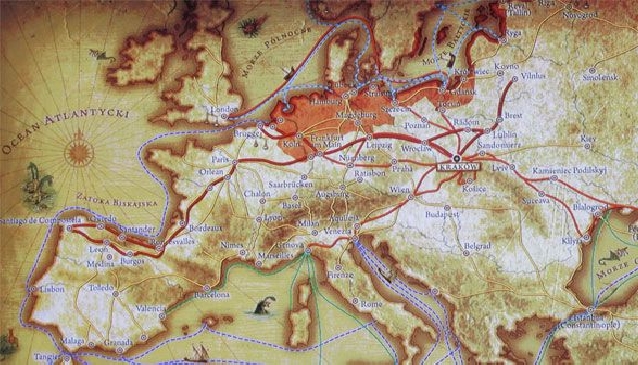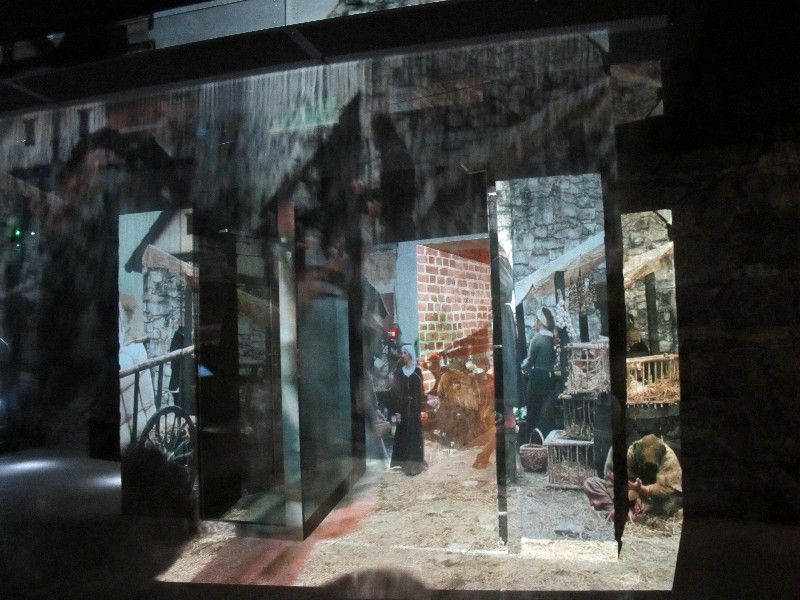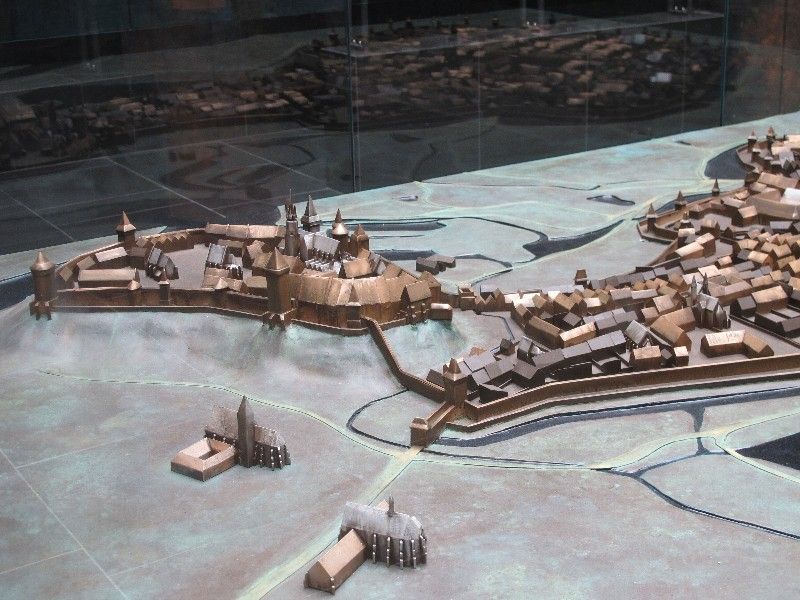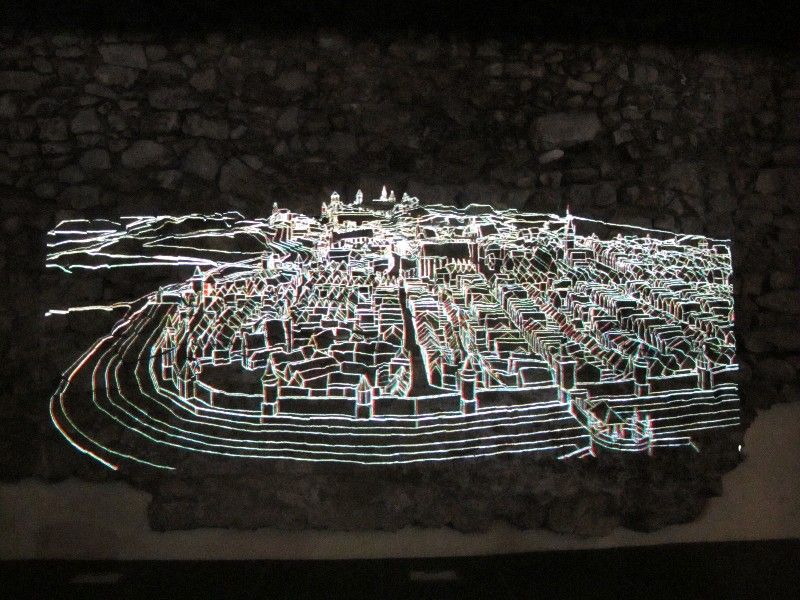Follow the echo of medieval footsteps under Krakow's Main Market Square

The largest underground museum in the world reveals Krakow’s past in a state-of-the-art multimedia exhibit. Immerse yourself in the sights and sounds of the city’s rich medieval heritage with the help of three-dimensional recreations and holographic displays, interactive screens, films of Cracovian legends and a path that leads through the city’s early foundations, uncovering the past. This is quickly becoming one of the top attractions in Krakow.
Krakow’s magical charm is somehow both ancient and modern, tied to the layout of the land, the narrow trodden streets that fan outward from its grand central square to the riverbank, its international crowd, colourful markets, busy nightlife, and plentiful hidden nooks and delightful crannies. It is a royal city where much of the medieval grandeur seems unchanged. But how much of what we see today really reflects that distant age of kings, defensive walls, crisscrossing trade routes to the Near East and fire-breathing dragons? Now, you can find out.

Smoke Screen Projecting Holographic Images of Medieval Marketplace Life
With its grand opening in September 2010, the underground museum beneath the Sukiennice in the Main Market Square is set to reveal troves of buried history. The exhibit is entitled “In the footsteps of Krakow’s European identity” and traces the path of the city’s transformation over the ages. Visitors descend four meters below the market square’s paving stones to a different world, one that dates back to a time long before this grand heart of the city, the largest square in Europe, became the elegant expanse of open space it is today.
Archeological digs begun around 2005 revealed layer upon layer of early foundations, and studies of the finds led to some surprising conclusions. The market square, now such a city icon, looked nothing like it does today; even as it began to take shape as the central point of the city some seven hundred years ago, it would have appeared more as a labyrinth of wide intersecting avenues cluttered with stalls and buildings. Most of the buildings that once covered the main square weren’t brought down until about the nineteenth century, creating the open vista we enjoy today.
In its earliest days, the area now covered by the main square wasn’t part of the city at all. The Wawel settlement extended at that time about as far as Plac Wszystkich Swietych (All Saint’s Square), just south of the main square. Beyond these city limits was a massive graveyard that stretched from the foot of the Mariacki Church all the way to the opposite side of the current Old Town. Archeologists uncovered a vast expanse of graves, some of them revealing traces of pagan Slavic burial traditions. Beads, necklaces, buckles, knives and even pottery were sometimes discovered along with human remains.

Krakow
A later settlement of wooden huts built over the cemetery grounds was eventually destroyed by the Tatars in the mid-13th century; it is to the burning wreckage they left of the city that we owe the creation of the grand central square, centerpiece of Krakow’s modern layout. The city was renovated completely, with foundations laid for the extensive marketplace and its pattern of intertwining paths. Some remains of the early wooden huts are still visible, while floors, paving stones, wooden water supply systems and even a bridge – the only medieval wooden bridge in Europe – from the square’s foundational years are on display.
By the late thirteenth century, the square was laid out as a tangle of raised, paved paths, about 6-10 meters wide, between which were organized several smaller markets – a chicken market, hay market, salt market, and of course the Sukiennice (Cloth Hall) and Ratusz (Town Hall), among others. These paths can now be traced by the curious visitor, the bustling market life of these early years recreated with both precision and artistry.
The exhibit of the underground museum does not stop at the unveiling of archeological treasures. It is a modern multimedia display that brings the visitor back to the Middle Ages through sights, sounds and interaction. At the entrance to the exhibit, visitors pass through a smoke screen onto which holographic images of medieval marketplace life are projected. Screens further on show stretches of burning huts after the Tatar invasion, the scene of a Slavic burial and many other aspects of daily life. Every detail, down to the lapping of puddles and the echoes of marketplace din, helps to re-create a past world.

Krakow
Discovered relics such as jewelry and toys are carefully displayed in cylindrical cases. Interactive screens take visitors deeper into the architecture and topography of the early city. Three-dimensional visualizations project the atmosphere of previous ages. Films depict old legends and the history of important locations. A children’s corner recounts local tales and provides educational games. The foundations of long-forgotten buildings lie unburied and exposed along a well-plotted trail through time.
Even those who slept through their history lessons will leave the underground museum with a deep understanding of medieval life and the significance it has for the city today.